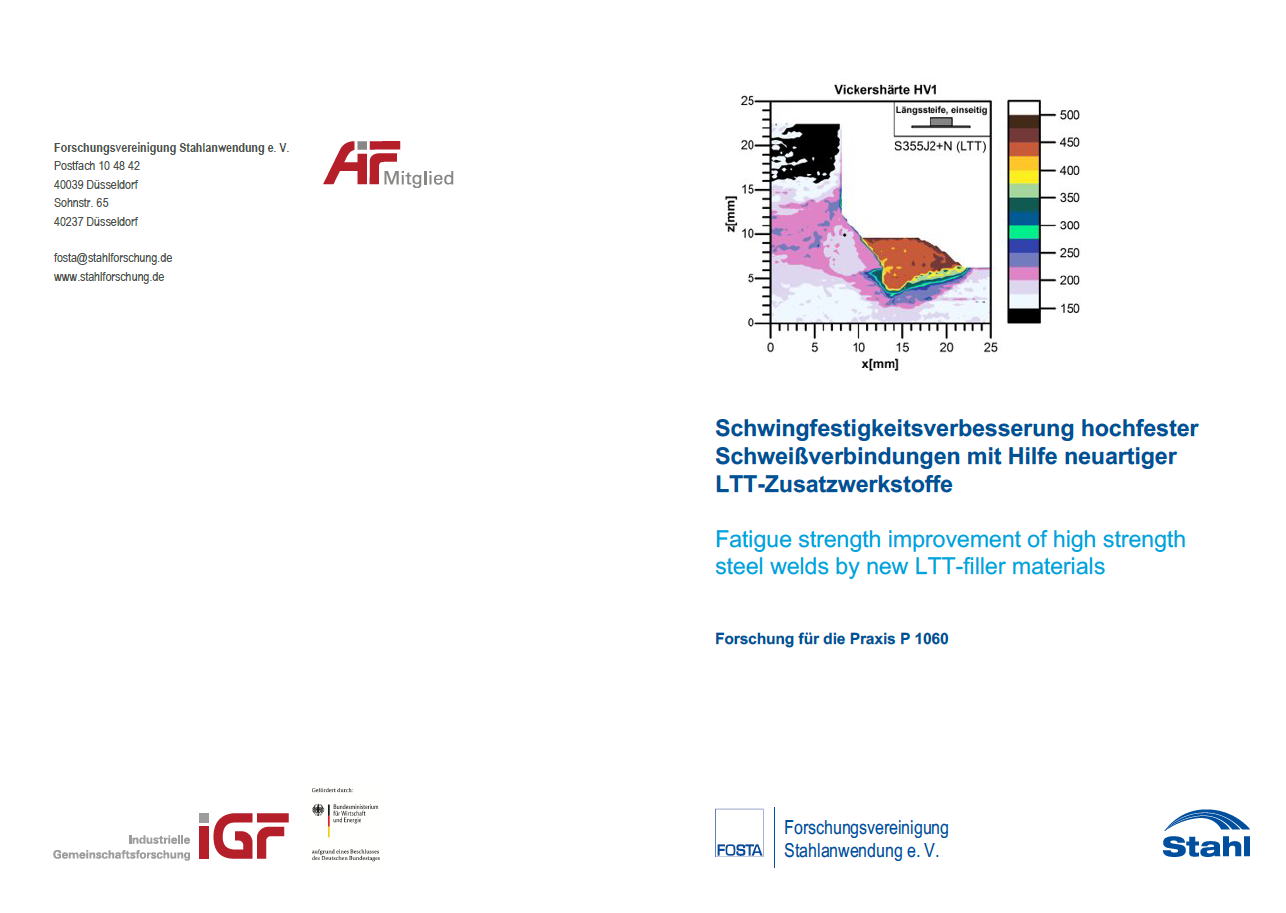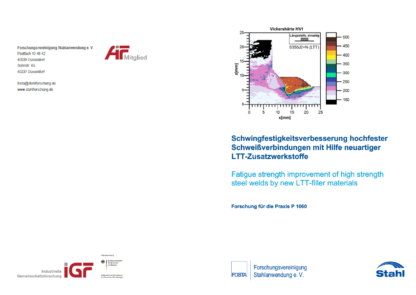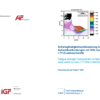Description
P 1060 – Fatigue strength improvement of high strength steel welds by new LTT-filler materials
The use of LTT filler materials represents an alternative approach to the usual methods of weld post-treatments for increasing the fatigue resistance of welded steel structures. The essential mechanism is based on the influence of the low martensite start temperature on the residual stress state already during welding. As a result, the compressive residual stresses from the hindered volume expansion due to phase transformation become fully effective. Furthermore, the weld has a high hardness, which can delay the formation of cracks, but also leads to a low notched bar impact energy.
In the present research project, fundamental investigations were carried out into the welding processing of an LTT filler material. This includes ensuring weldability and characterizing the joint properties. Investigations into weldability made it clear that safe use is possible in the working range available for high-strength steels. The Cr-Ni-based LTT filler can be joined with high weld seam quality. The mechanical properties also allow the use in the field of high-strength steels with a yield strength of 960 MPa. There is potential for development in terms of toughness. The notch impact values achieved in this work are significantly lower than commercially available conventional weld met- als. The investigations prove that the impact of the martensitic phase transformation has an effect on the entire weld metal. The intended high compressive residual stresses are mainly found in bulk of the weld metal.
Fatigue tests were carried out on the steels S355J2 and S960Q using conventional filler materials in comparison to the LTT filler. The construction details used are a butt joint with variation of the weld seam design (DY seam and V seam), a cross joint with HV seam and an overlap joint with a fillet weld on one and both sides. Furthermore, a component-like specimen (longitudinal stiffener) was examined, in which the LTT filler material was applied as an additional welding layer. In addition to the fatigue strength, the welds were characterized in terms of residual stresses, residual stress stability during fatigue testing and metallographic examinations. The results show that LTT fillers can lead to a significant increase in fatigue resistance in compliance with important design guidelines. This allows the lightweight construction potential of high-strength steel grades to be exploited.
Main content only available in german language.
Published in:
April 2020
Authors:
Prof. Dr.-Ing. Thomas Kannengießer, Dr.-Ing. Arne Kromm, Dipl.-Wirt.-Ing. Jonny Dixneit, Prof. Dr.-Ing. Klaus Dilger, Dr.-Ing. Thomas Nitschke-Pagel, Dr.-Ing. Jonas Hensel, Dipl.-Ing. Hamdollah Eslami




